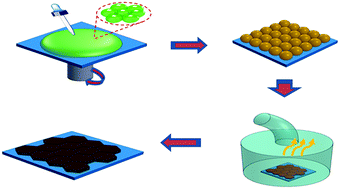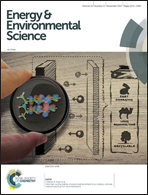Additive engineering for high-performance room-temperature-processed perovskite absorbers with micron-size grains and microsecond-range carrier lifetimes†
Abstract
Perovskite photovoltaics have attracted remarkable attention recently due to their exceptional power conversion efficiencies (PCE). State-of-the-art perovskite absorbers typically require thermal annealing steps for high film quality. However, the annealing process adds cost and reduces yield for device fabrication and may also hinder application in tandem photovoltaics and flexible/ultra-low-cost optoelectronics. Herein, we report an additive-based room-temperature process for realizing high-quality methylammonium lead iodide films with micron-sized grains (>2 μm) and microsecond-range carrier lifetimes (τ1 = 931.94 ± 89.43 ns; τ2 = 320.41 ± 43.69 ns). Solar cells employing such films demonstrate 18.22% PCE with improved current–voltage hysteresis and stability without encapsulation. Further, we reveal that room-temperature-processed perovskite film grain size strongly depends on the precursor aggregate size in the film-deposition solution and that additive-based tuning of aggregate properties enables enlarging grains to the micron scale. These results offer a new pathway for more versatile, cost-effective perovskite processing.

- This article is part of the themed collection: 2017 Energy and Environmental Science HOT articles


 Please wait while we load your content...
Please wait while we load your content...